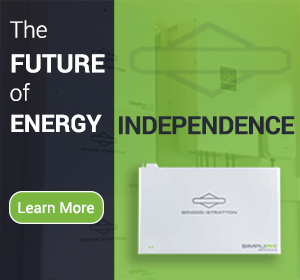Why Home Owners are Upgrading to Home Battery Systems, and Not Looking Back.
Home Energy in the United States is something that has remained relatively static for over 60 years. Dependence on utility, fossil fuel domination, and the same damn wires in place for decades are markers of living in suburban America. Throw in a power outage every week or so, and we are close to the blessing that is living in Vermont.

Now, Vermont has its own mess regarding infrastructure. We rank 49th in terms of grid reliability, have the second oldest population in the county, and we do not have the interest in the trades by young people we need to be able to upgrade any lines or networks.
At a distance, one would expect the inevitability of a failing system, and homeowners to be facing doom. In part, this is why we are so adamant about recommending generator systems to our customers. Energy Independence is everything in an uncertain world.
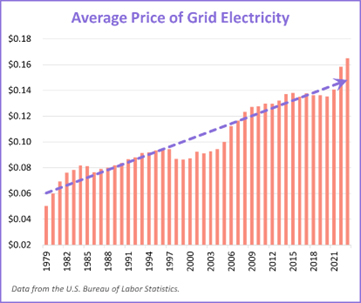
- Certainty to keep the lights on.
- Certainty to keep the water running.
- Certainty to keep the food edible.
- Certainty to stay warm at night.
Top off this uncertainty with the exploding costs of energy in America, many are left scratching their heads at what the future brings.
Fortunately, Brook Field Service Generators is launching a product that will offer the benefits of certainty a generator provides, in a quiet, clean, fuel-less unit, suitable for urban environments and off grid applications.
The Briggs and Stratton SimpliPHI Energy Storage System (ESS) offers DAYS of whole home power, with painless installation that requires no digging, fuel lines, or home modifications. As its name implies, this technology is simply large batteries that offer enough power to keep all your devices at home running. The tech is safer than other batteries, and scalable to either run your essentials, or a whole home load.
What the heck is this thing?
The technology that is unveiling itself each day in the 21st century would knock the knickers off someone from the 1920s. Self-driving cars, phones in your pocket, and doorbells with cameras are edifices of human ingenuity, and like those, few could have predicted homes powered by batteries to be on the “future” bingo card.

The SimpliPHI Home Energy Storage System by Briggs and Statton is one of the first dives into this reality, following in the footsteps of companies like Tesla and Enphase. These ESS offer whole home power for situations like outages and peak shaving. When the power goes out, the system seamlessly transfer electricity into your house, powering all your essentials and desires. No moving parts, no loud, smelly engines, no reliance on sun. That’s right, your WHOLE home powered by batteries. Barbie’s dream home come true.
The system can then be charged back up by solar, wind, generator, or utility power, ready for use when the power levels are adequate
Again, when I first heard about this, I was picturing something out of Prometheus or Interstellar. A new age tech that’s just beyond our grips as a society. I grew up with toys powered by D and AA batteries, so this felt like a tangible sign of the times.
Why Should I Install One in my Home?
How you ever thought, “I never want to lose power again, but I don’t want to deal with a generator”? Or even, “Generators are a great idea, but they are loud, need maintenance, and I want to be carbon conscious”? You could even have solar power currently, and be looking to store that energy, because after all, when the sun is away, so isn’t the power.
Those may be some of the examples that are at the end of they buying cycle, however, even if you are not considering home backup power, you should be considering “Energy Independence”.
Energy Independence
Energy independence is the belief that homeowners should be able to produce, store and use their own energy, to avoid dependence on the unreliable grid. A pretty reasonable belief, huh? Well, the Briggs ESS delivers on this and separates itself significantly from the rest of the pack, like Tesla.
Regardless, ESS provide your whole home with electricity, so quickly that you will not even notice that the power went out. The tech sounds like what a generator can do, but there is no engine, nor energy being produced. The power that is used is stored from utility, solar, or agenerator if you happen to have one.
Power Applications
The system can then deliver power for over a week; depending on the size, load, etc. of course. No sound from an engine nor maintenance, no depen dence on weather, and it does it while being a clean source of energy.
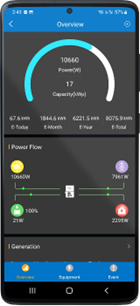
The mobile app integrate the ability to change what loads are essential, and what circuits to turn on and off. Longer outage forecasted? Only run essentials. Power company testing a new line and outage for two hours? Run it all.
The product is a shoe-in for solar owners, as the storage of energy is just as important, if not more, as the production. Remember, YOU CANNOT use solar power when the sun is not out. Period. BUT, you CAN store that power for later use with an ESS. Essential, right?
Generator owners should also consider the addition, as, the Briggs product specifically, hooks to generators, charging the batteries back up whenever needed.
Tax Incentives
Tax incentives are also primed to be taken advantage of. This unit offers 30% in Tax Credits through the investment tax credit (ITC). That means if your unit costs $30,000 all said and done, you will receive $10,000 in federal tax credits to be used when filing, and they roll over if not used in that first year.
Alright, then what is so great about Briggs’ product?
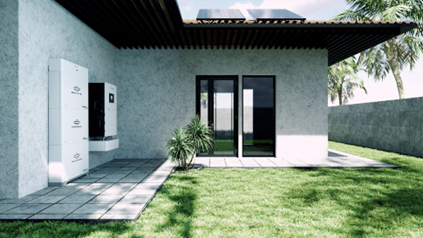
Safety, scalability, and flexibility to other energy sources have been meticulously thought out by the team in Wisconsin. SimpliPHI was in business for over 10 years before being purchased by Briggs, and was among the first to introduce large scale battery systems. Briggs saw a star, and purchased the innovative company right before the COVID pandemic. Two trusted American companies working hand in hand, pushing the limits of the future before our eyes. Somewhere out there, a Bald Eagle shed a tear.
Safety
Safety, though, was a major priority for a team like Briggs, known for reliability. SimpliPHI engineered the system to accommodate stable battery tech. No longer are the lithium batteries of old that use nickel as the primary component. Briggs uses safe LFP, or Lithium Ferro Phosphate, batteries that adhere to NFPA codes and guidelines. Your local fire department approves!
Scalability
Sizing a unit is half of the battle for any home upgrade. HVAC, Generator, Deck. If you need something larger than you install, youre S.O.L. Fortunately, the SImplPHI ESS, being like a lego brick, is completely scalable. Need more power? Add another brick. Need WAY more power? Add another stack. Other companies have the whole system in one battery, which is very heavy, leaving the customer with little upgrade options, and a large sum to pay if they do.
Flexibility
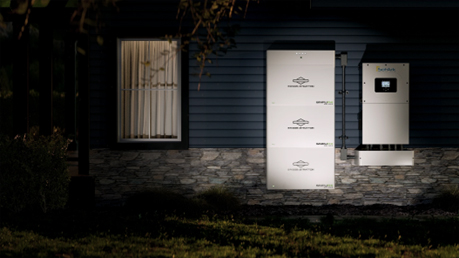
The Briggs system is also flexible in its energy inputs. Generator, solar, wind, and ulitity all hook up easily, and any can be used to power your system. Other companies do not allow generator connections, or will void warranties if connected to generators. Cough Cough Tesla. So, no matter WHAT the outside conditions are, you will have a source of power to keep charged.
Lifespan
SimpliPHI looked at the batteries in market, and said, “we can do better”. If you have not gotten that sentiment in reading this, then you might be on wrong blog, but, their lifespan was a key selling point in all their webinars and trainings. 10,000 cycles at 80% discharge means if you ran the unit once per day, it would still be rated to last over 27 years. Briggs is coming out saying 16 years to its sales reps, but splitting the middle, 20 years of lifespan far exceeds any other source of home energy.
Rugged
Batteries are fickle in the extreme elements. I think we all understand the cold weather effects on charge right? Well, this has been mitigated by SimpliPHI, ensuring their batteries can withstand charge temperatures from 34F -158F, and discharge temps of -4f to 158f, a wider range than any major competitor. Here in Vermont, it gets below freezing often, so they have also developed cold weather packs for areas of the country that are a little more, temperamental, pun intended.
No WIFI Needed
Only for updates/firmware/software upgrades. Now that we got the asterisk out the of the way, yes. No wifi needed, except to update. This means this system IS the off grid answer to stored power. OR if you are like me and from bum fudge nowhere NY, you will be able to use the system. Other companies, again, looking at you Telsa, will VOID the warranty if not ALWAYS connected to wifi. What gives Tesla? In all seriousness, this is a huge advantage to avoid hacking or interference from other entities abroad. If the grid goes down, you will not have to worry!
Warranty
Finally, if all of the above has not sold the system yet, its warranty exceeds tesla and the other leading competitors by 3 years. Industry standard is 5-7 years, however, this product is backed with by a 10 year promise. 10 years is longer than most ESS brands have been doing business, many offering warranties that are older than the companies themselves. Talk about tall promise.
Well, if this is so good, it must be expensive, right?
To be frank, right now, ALL battereis like this are expensive. They should NOT be the first thing thought of for home energy backup. That should a generator. In time, they will reduce in cost, but it is important to usher this tech in asap, to better the systems in the long run. Capitalism, baby!
That being said, there are two factors which make the SimpliPHI system a simple choice.
First, is that the SimpliPHI system is cheaper per KWH than the tesla Powerwall. Meaning, for a same sized system, SimpliPHI is more affordable than Tesla, the current leading brand. Right there is at least enough reason to compare.
Second, are the Tax incentives mentioned above. 30% off is a HUGE reason to think about the upgrade to your home if it has ever crossed your mind. This incentive puts the price comparable to a generator, though you will not receive whole home power, just the essentials.
Although these systems ARE too good to be true, the pricing is what does bring some customers down to reality.
Is it right for you?
Well, my general analysis is that every home owner SHOULD have this system, but is it right for you?
In my opinion, costs are a huge factor, and really the deciding factor in the current state of energy storage. If you have the money for this system, and tax credits seem great, then give us a call tomorrow. But the average New Englander is not made of money. Upfront costs are real.
The long term savings, however, compared to a generator, or solar array, are pretty stark. No maintenance, no fees besides the installation and purchase costs, and a company that will not leave you in the dust like some of the others that made a cash grab when the market was right. So, over the 16 minimum year lifespan of the unit, the savings make themselves up.
The green future is also a real factor. If you, like us, strive to reach Net Zero by 2050, then this is they type of tech that NEEDS to be welcomed with ope n arms. It is why there are so many incentives available for products that will reduce our carbon footprint.

Overall, the excitement for this product is palpable in our neck of the woods. Solar, off grid, and green conscious homeowners are singing the praises of Briggs and Stratton in the morning sun. This product is for them, NOW. But those who are still on the fence should pay attention to this technology in the next 5 years.
US energy production is entirely dependent on fossil fuels, and our grid is already transferring as much energy as it can, without major, long term upgrades that wouldn’t change even over the next 10 years. A republican sweep in 2024 will likely push that to atleast 15, as they push the non renewable sources that made America great.
Energy storage is the next BIG thing, and if you do not see the wave before it comes, you will get swept away before you can catch a breath.
– Sam Politi, Brook Field Service

